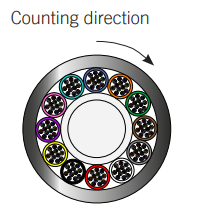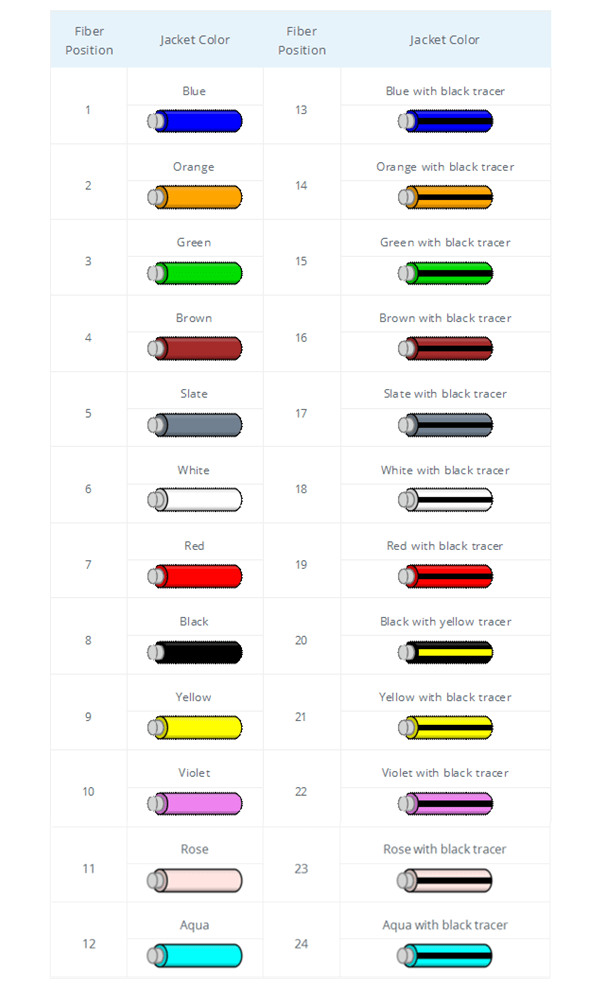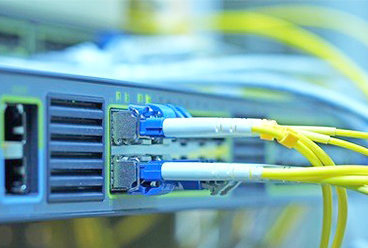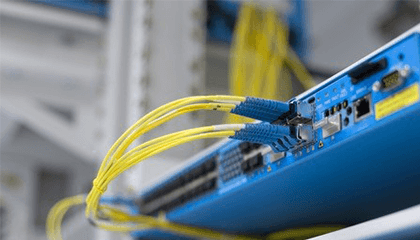Color coding of indoor fiber optic cable is not just for decorating indoor fiber optic cabling systems. It also has an important function, which is to help users to easily and accurately identify which types of fiber optic cables are used in fiber optic cabling systems. Therefore, a comprehensive understanding of the color coding of indoor optical cables is one of the necessary skills for cable managers.
Background knowledge
The color coding of the indoor optical fiber cable distinguishes the fire resistance of different kinds of optical cables and optical cables according to the color of each optical fiber in the sleeve and the color of the optical cable sheath. These different colors of optical fiber cable are generally used in indoor applications, and the TIA-598C standard and EIA/TIA 568 standard specify the color coding of the indoor optical cable. It should be noted that the outdoor cable is not within the scope of these standards. This is because outdoor cables are generally black jacketed to protect the cable from damage caused by sunlight and ultraviolet radiation. Therefore, this tutorial mainly discusses how to distinguish different kinds of optical fiber cables by using indoor optical cables for color coding in terms of optical fiber chromatography and the color of the cable jacket.
Inner Cable Optical Fiber Color Code
Inside a multi-fiber cable, individual fibers are compliant with fiber color code as well. They are often distinguished from one another by color-coded jackets, buffers or tubes on each fiber. According to EIA/TIA-598, inner fibers are color coded in a group of 12 fibers and they are counted in a clockwise direction.

There are two situations for multi-fiber cables:
Each fiber in the sleeve has its own unique fiber number, color, beam tube, etc. Generally, 12 fibers or less are a bundle of tubes, and each tube will be numbered or colored according to the same fiber color code. For example, the first tube is blue and the second is orange.
For cables consisting of more than 12 strands, the cable color code will appear repeatedly. Each group of 12 fibers was determined by other methods. For example, the fiber color codes of the 24 chain sets repeat some variations, for example, the first set of 12 is a solid color, and the second set is a solid color with stripes or other identifying marks.
The order of colors of the internal fiber is as follows:
The following table shows the chromatographic arrangement of fibers in a loose tube (International Fiber Optic)

Cable jacket color code
The TIA-598C standard also makes different provisions for the color of indoor cable jackets to distinguish different applications of optical cables. Generally, different kinds and different applications of the optical cable will also have different colors of the sheath, the following table is the sheath color of common optical cables:
Fiber Type | Color Code | ||
Non-military Applications | Military Applications | Suggested Print Nomenclature | |
OM1 62.5/125µm Multimode | Orange | Slate | 62.5/125 |
OM2 50/125µm Multimode | Orange | Orange | 50/125 |
OM3 50/125 µm (850 nm Laser-Optimized) Multimode | Aqua | Undefined | 850 LO 50/125 |
OM4 50/125µm (850 nm Laser-Optimized) Multimode | Aqua/Violet | Undefined | 850 LO 50/125 |
100/140µm Multimode | Orange | Green | 100/140 |
OS1/OS2 Single Mode | Yellow | Yellow | SM/NZDS, SM |
Polarization Maintaining Single Mode | Blue | Undefined | Undefined |
Conclusion
Although this tutorial describes in detail how to distinguish different fiber optic cables by using optical fiber chromatography and the color of the jacket, sometimes we cannot distinguish the fiber optic cable simply by the color code of the fiber optic cable. This is because there are many types of fiber optic cables on the market today. The color is not enough to completely distinguish the difference between the two fiber optic cables. In this case, the more reliable method of distinguishing different fiber optic cables is to look at the fiber optic cable specifications and models.
Tags : fiber optical cable , indoor cable
— END —
























